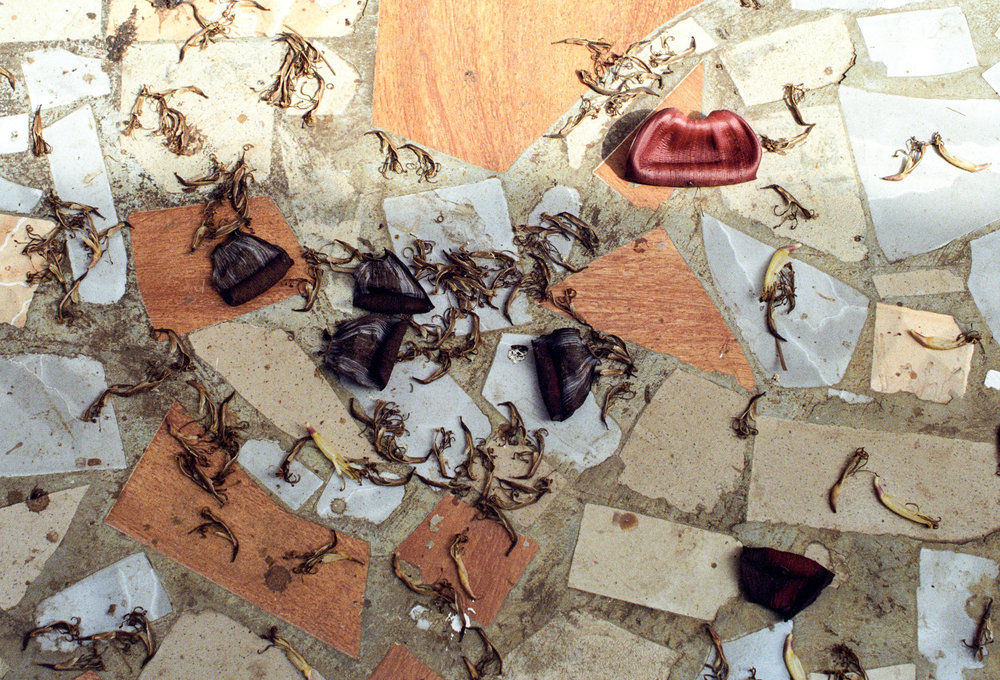Episode 13 | Teju Cole
Magic Hour - En podcast af Jordan Weitzman

Kategorier:

Teju Cole, Sunset Park, Brooklyn, NY, 2017. Photo by Jordan Weitzman
Recorded in Sunset Park, Brooklyn, NY
Episode Length: 38:33
Air Date: July 7, 2017
Produced by: Jordan Weitzman
Edited by by: Cristal Duhaime
Teju Cole, the celebrated author known first and foremost for his writing through his novels such as Open City and Every Day is for the Thief, has dedicated much of his creative output to photography as well.
He’s been making his own photographs for over 15 years, and writing on the subject photography since 2012. His brilliant essays have appeared in the New Yorker and Aperture, and as photo critic for the New York Times magazine, he writes the monthly column On Photography. Since 2014, he's used the that space to explore issues and ideas central to the discourse around photography today.
In this episode, Jordan Weitzman sits down with Cole at his office in Sunset Park in Brooklyn at an exciting time for him. His first solo show in the US at the Steven Kasher Gallery in New York is on till August 11 and he just launched his latest book, Blind Spot, a collection of photographs from his travels paired with a short piece of text that he wrote for each one.

Beirut, May 2016. Image and text by Teju Cole
At the National Museum of Beirut, as in any museum of archaeology, there are shards, sculptures, and plinths eroded by the centuries. Mar- ble is hard, but not invulnerable. But at this museum are also ancient mosaics with very recent damage: mosaics shattered by artillery fire during the civil war.
I am arrested by a Phoenician tribune or altar of the fourth century b.c.e. It has been carved in a purely Hellenistic style. In the lower of its two frieze registers, dancers process across the four sides in high and bas-relief. They move across the centuries to silent music. The grace of the bodies is preserved but all the faces have been knocked off.
In his speech, Nasrallah addresses and does not address Badred- dine’s death in Syria. We fill in the gaps from what is not said.
Who defaced, so meticulously, each dancer in this frieze? It is an- cient damage in this case. But it couldn’t have been the earthquake that hit Sidon in the late fourth century (an earthquake is not a precision weapon). Nor could it have been the use of the site as a limestone quarry, for quarrying requires vaster quantities of stone. More likely it was the Christians. They banned the cult of Eshmun and built in its place a church. They chipped away, with theological precision, each dancer’s face.
The collection is also what is not there. Museum of wounds.

Tivoli, April 2015. Image and text by Teju Cole
We liked the house. We liked the terms. They would be away for a few months.
Their mother was still alive in September, living in the house, then Death took her. (Their father had died in 1986.) We moved in in January. Funny place. Knickknacks everywhere. Things askew. On the mantel- piece were two urns, containing their parents, there when we woke up, there when we went to bed.

Lagos, December 2014. Image and text by Teju Cole
Pliny describes in the thirty-sixth book of his Natural History one of the remarkable illusionistic mosaics of antiquity: “Pavements are an inven- tion of the Greeks, who also practised the art of painting them, till they were superseded by mosaics. In this last branch of art, the highest ex- cellence has been attained by Sosus, who laid, at Pergamus, the mosaic pavement known as the ‘Asarotos œcos;’ from the fact that he there represented, in small squares of different colours, the remnants of a banquet lying upon the pavement, and other things which are usually swept away with the broom, they having all the appearance of being left there by accident.”
Links
http://tejucole.com
http://www.stevenkasher.com

